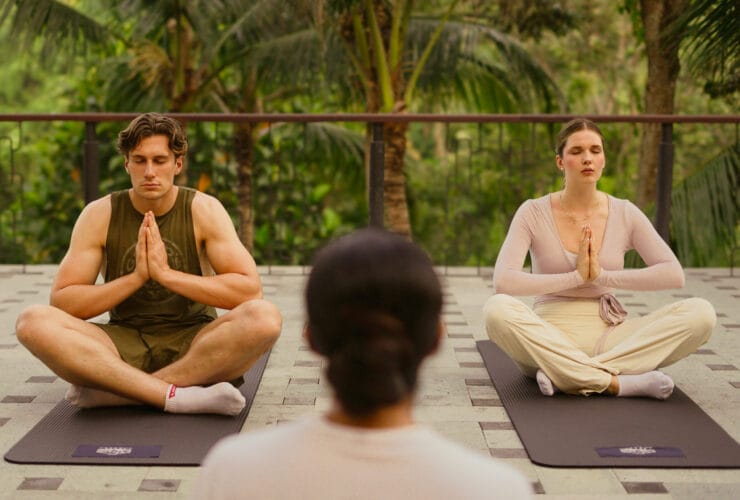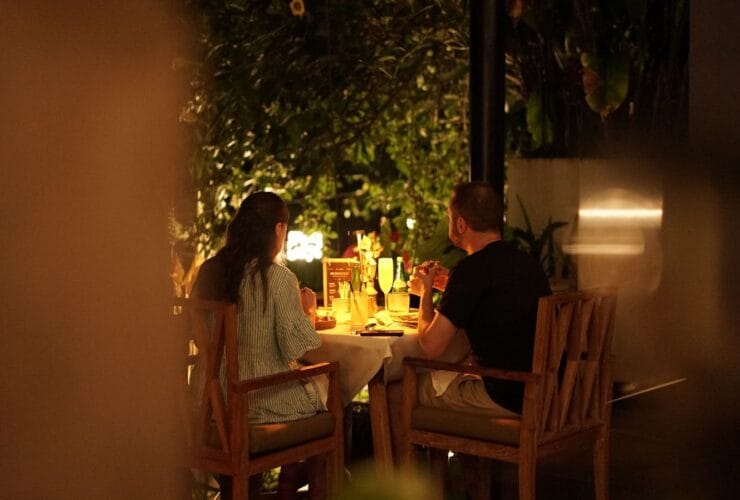Journal
The Sacred Confluence: Where Two Rivers and Energies Become One at Pura Gunung Lebah Ubud
Tucked in the verdant folds of Ubud’s jungle, just steps away from the iconic Campuhan Ridge Walk, lies one of Bali’s most spiritually resonant landmarks: Pura Gunung Lebah. It’s not merely a temple, it’s a living embodiment of a cosmic truth. At the sacred meeting point of Tukad Wos Lanang (the masculine river) and Tukad Wos Wadon (the feminine river), nature whispers the wisdom of balance, unity, and love.
A Sage, A Vision, and the Birth of a Temple
Long before Ubud became the international heartbeat of spiritual tourism, a revered sage named Maha Rsi Markandeya arrived on the island of Bali. His purpose was not conquest, but contemplation. Guided by divine insight and the spiritual pull of the land, he roamed the island in search of a place where body, mind, and spirit could truly align.
What he discovered was a hidden valley where two rivers, so different in flow and character, converged into one. The masculine Lanang, with its strong current and assertive energy, met the gentle, nurturing Wadon in a silent ceremony of nature’s own making. The energy was palpable. It wasn’t just a river junction, it was a spiritual intersection.
Here, Rsi Markandeya founded a meditation sanctuary, originally called Pura Payogan, which would later evolve into Pura Gunung Lebah, meaning “temple of the valley beneath the mountain.” The name itself speaks of paradox and harmony, strength and surrender.
The Divine Feminine and Masculine in Balinese Cosmology
In Balinese cosmology, duality is not opposition, it is cooperation. The lanang and wadon represent more than just masculine and feminine forces; they symbolize the interconnectedness of all things. Like Purusha and Prakriti, or Yin and Yang, they are two halves of a greater whole.
This philosophy isn’t confined to metaphor, it is physically present at Pura Gunung Lebah. The flowing rivers beneath it aren’t just bodies of water. They are living manifestations of this sacred balance. And as they merge, so too does the understanding that love, harmony, and peace are born from the coming together of contrasts.

A Temple That Embodies Living Harmony
The very design of Pura Gunung Lebah reinforces this principle. Its structure is both grounded and ornate. Built into the terrain but reaching for the divine. The temple’s shrines and gateways are carefully placed to channel the energy of the land, creating a sanctuary that feels both ancient and alive.
Rituals performed here pay homage to both male and female deities. Ceremonial dances, flower offerings, and sacred chants reflect a rhythm of life that doesn’t seek to dominate, but to harmonize. It is a place where opposites don’t clash, they coalesce.
A Pilgrimage for the Modern Soul
Pura Gunung Lebah is not only a holy site for Balinese Hindus, it is a spiritual compass for modern seekers. In a world driven by polarity, work and rest, ambition and anxiety, noise and silence, this temple offers a different narrative: one of integration.
It doesn’t ask you to choose between masculine or feminine, logic or feeling. It asks you to honor both. To recognize that fulfillment is not in the extremes, but in the delicate dance in between.
A Sacred Flow That Continues at Amora Ubud
Just a short walk from this spiritual haven lies Amora Ubud, a boutique romantic retreat perched high above the sacred confluence. More than a luxury resort, Amora is an extension of this sacred energy. From its vantage point, you can watch the very rivers that inspired Rsi Markandeya centuries ago. The view from your villa? The place where dual energies become one.
At Amora, guests are invited not just to witness love, but to live it. Whether it’s through the Romance River Pool Villa overlooking the mystical streams or through the Balinese Culture Dinner featuring sacred dances like Oleg Tamulilingan, Amora invites you to take part in the sacred ritual of harmony.
Here, you don’t just stay, you reconnect. With nature. With your partner. And perhaps most importantly, with yourself.
The Eternal Lesson of the Rivers
The Tukad Wos Lanang and Tukad Wos Wadon will continue to meet and merge, just as they have for centuries. Their story is etched into the heart of Ubud, and into the soul of anyone who stops to listen.
In their meeting lies a truth that transcends culture and creed: balance is not found in sameness, but in unity.
And in Ubud, at Pura Gunung Lebah, and at Amora, you’ll find that truth flowing in every direction.





